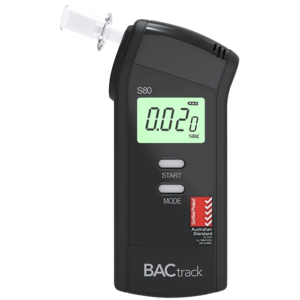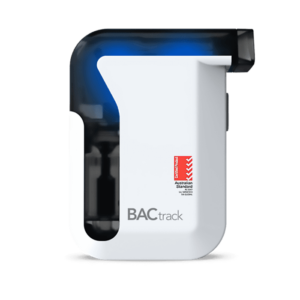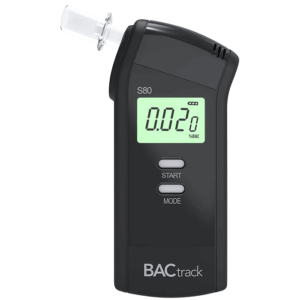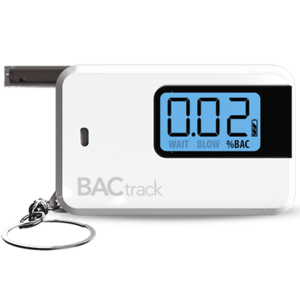Alcohol and Urine Tests: What It Is, Procedure, and Accuracy
05 December, 2023

When someone consumes alcoholic drinks, their body processes it and eventually removes it from their system. One of the ways to detect liquor intake is alcohol and urine tests. This assessment can provide valuable information about the alcohol consumption habits of a person. To conduct the test, a donor must provide a urine sample. This is forwarded to an accredited laboratory for testing. This method provides high accuracy due to its ability to trace alcohol metabolites for an extended time.
Alcohol Use Disorder (AUD) and alcohol abuse are serious health issues. This can have detrimental effects on the physical, mental, and social well-being of a person. It can lead to various complications, including liver failure, mental health disorders, and strained relationships. Fortunately, there is a urine assessment for quick and accurate results. This article will present alcohol urine testing, the procedure to conduct it, and its accuracy.
What Is an Alcohol and Urine Test?
The alcohol and urine test is a diagnostic tool to monitor the presence of alcohol in the urine. When a person consumes alcohol, it undergoes a process of alcohol metabolism in the body. This leads to the production of specific byproducts. These byproducts, known as metabolites, can be detected in urine for several days after alcohol intake.
Accordingly, it has different types, such as Ethyl Glucuronide (EtG) or Ethyl Sulfate (EtS) tests. Alcohol testing using urine serves several purposes across different domains. In the workplace, employers may use the testing method as a part of workplace policy and workplace safety. This can be for pre-employment, random testing, reasonable grounds, after a workplace accident, or as part of the rehabilitation programs.
In legal settings, urine alcohol tests may be beneficial in monitoring people on probation or for detecting drunk driving. Healthcare professionals also utilise this method of testing for alcohol as part of the assessment and monitoring of patients with AUD. Overall, the testing aims to measure the level of Blood Alcohol Concentration (BAC) and the effects of alcohol.
Advantages Over Other Testing Methods
The following are the advantages of the method over saliva, blood, hair, and breath tests:
- Extended detection window – unlike saliva tests, the method can trace alcohol metabolites for up to 80 hours.
- Non-invasive – collecting a urine sample is relatively simple. This does not require a syringe to gather the specimen.
- Less affected by environmental contaminants – urine tests tend to be more reliable in the presence of ethanol variables.
- Technology and procedures – the advancement of the process allows for high levels of accuracy and precision.
- Versatility – it can be used for various purposes, including workplace settings, law enforcement, and medical professionals.

The Procedure for an Alcohol and Urine Test
Conducting an alcohol and urine test involves specific procedures to collect and analyse urine samples for the presence of ethanol metabolites. The procedure begins with the collection of a urine specimen from the candidate. To maintain the integrity of the sample, the person collecting the sample may provide the individual with a clean, sealable container.
Furthermore, the conductor will provide instructions on how to collect the midstream urine specimen. This involves voiding a small amount of urine before collecting a portion of the stream in the container. This helps minimise the presence of contaminants. Also, it ensures that the sample is representative of the alcohol metabolites of the person at the time of collection.
After collecting the urine sample, the conductor will seal and label it. Proper labelling is crucial for maintaining the chain of custody. Then, they send the specimen in for laboratory testing. In the laboratory, highly skilled technicians use analytical methods to screen for metabolites in the sample. After that, the laboratory generates a report detailing the results of the test.
What Can Be Detected?
The test primarily detects two key alcohol metabolites: the EtG and EtS. EtG is a direct result of ethanol metabolism in the body. Meanwhile, EtS is another metabolite that arises from the breakdown of ethanol. Subsequently, these metabolites are detectable in urine for a certain period after alcohol consumption. This makes them valuable markers for assessing alcohol intake.
Additionally, the detection of EtG and EtS in urine provides insight into the alcohol consumption patterns of a person. Particularly, the test can detect the substance for about 80 hours. Therefore, it serves as evidence of recent exposure to alcohol.

Accuracy of Alcohol and Urine Tests
Alcohol and urine tests are accurate due to various reasons. When an individual consumes alcoholic beverages, ethanol enters the bloodstream. The body then begins to metabolise alcohol in the liver. Accordingly, liver enzymes break down the ethanol into acetaldehyde and then into acetic acid. This is further metabolised and eventually out of the system through urine.
EtG is a direct metabolite of ethanol and is a biomarker of alcohol consumption. This is detectable in urine, making it a reliable metabolite for identifying alcohol use. Moreover, laboratories with accreditation test the urine samples. They usually incorporate techniques like gas chromatography and mass spectrometry because these methods enable precise measurement.
Urine tests have high sensitivity and specificity for detecting alcohol intake. Sensitivity refers to the ability of the test to correctly identify people who have alcohol consumption. On the other hand, specificity refers to its ability to identify those who have not. Both aspects contribute to the overall accuracy of the test results.
Are There Risks of False Positives?
There are potential risks of false positives in alcohol urine testing. Despite the accuracy of the method, it is essential to consider certain variables. The use of products, such as mouthwash and medications, may contain alcohol. As a result, these products may inadvertently introduce alcohol into their system. Also, exposure to environmental sources, such as inhaling alcohol fumes, can lead to false positives.
Moreover, certain foods and beverages can contain compounds of ethanol. Therefore, the test may identify this as alcohol metabolites. While laboratories follow strict protocols, the possibility of human error or procedural mistakes can affect the result of the testing.
Conclusion
In conclusion, alcohol and urine tests are crucial tools in determining alcohol consumption and its effects on the body. The test commonly traces the metabolites EtG and EtS, and it aims to accurately identify liquor intake. Accordingly, this method is beneficial for workplace testing, law enforcement, and healthcare professionals. The procedure of the test requires a simple process. A candidate will provide a urine sample, which a laboratory technician will analyse for alcohol metabolites.
Urine testing for alcohol is accurate for several reasons, including the metabolic process of ethanol in the body and the techniques lab technicians use for high sensitivity and specificity. Moreover, the urine test provides advantages over other testing methods. It has a wide detection window, is non-invasive and versatile, and incorporates the advancement of technology and procedures. However, the test has the potential risk of false positives, typically due to certain products, environmental exposure, and human errors.





























